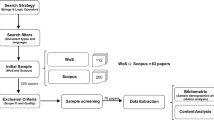Abstract
Although there is a common consensus on the importance of the effective knowledge management, systematic studies regarding the value of knowledge management have somewhat been missing, especially in the construction industry. This study attempts to evaluate the impacts of knowledge management on the organizational success. In doing so, the CII Knowledge Implementation Index (CKII) which quantifies the level of organizational knowledge implementation, is used as an indicator of how well an organization adopts the knowledge management process. In order to assess the level of the organizational success, individual project performance data is used in terms of cost, schedule, quality, and safety performance. Based on the analysis results, organizations with the higher CKII scores have better performance than the others in all of the project performance indicators. Therefore, it is logical to state that the analyses between the CKII and performance metrics reveal in general positive relationships, which validate the impacts of the effective knowledge management on the organizational success.
Similar content being viewed by others
References
Barthes, J. P. (1996). “ISMICK and knowledge management.” Proceedings of ISMICK196, Knowledge Management: Organization, Competence and Methodology, J. F. Schreinemakers, Ed., pp. 9–13.
Blosch, M. (2001). “Pragmatism and organizational knowledge management.” Knowledge and Process Management, Vol. 8, No. 1, pp. 39–47.
Clark, P. and Staunton, N. (1989). Innovation in technology and organization, London, Routledge.
Davenport, T. H. and Prusak, L. (1998). Working knowledge: How organizations manage what they know, Harvard Business School Press, Boston, MA.
Demarest, M. (1997). “Understanding knowledge management.” Long Range Planning, Vol. 30, No. 3, pp. 374–384.
Hussain, F., Lucas, C., and Ali, M. (2004). “Managing knowledge effectively.” Journal of Knowledge Management Practice, Vol. 5, No. 1, pp. 1–12.
Jeon, J. W. (2000). The conceptual modeling of a lessons-learned system for large construction companies, MSc Thesis, The University of Texas at Austin.
Kim, S. B. (2014). “Quantitative evaluation on organizational knowledge implementation in the construction industry.” Journal of Civil Engineering, KSCE, Vol. 18, No. 1, pp. 37–46.
Kim, S. B. and Gibson, G. E. (2001). A guide to the CII Implementation model and knowledge structure, CII Implementation Resource, Research Report 166-2, The University of Texas at Austin.
Kim, S. B. and Gibson, G. E. (2002). Assessment of CII knowledge implementation at the organization level, A report to the Construction Industry Institute, Research Report 166-11, The University of Texas at Austin.
Kogut, B. and Zander, U. (1992). “Knowledge of the firm, combinative capabilities, and the replication of technology.” Organization Science, Vol. 3, No. 3, pp. 383–397.
Kuan, Y. W. and Elaine A. (2006). “Development of a knowledge management initiative and system: A case study.” Expert Systems with Applications, Vol. 30, No. 4, pp. 633–641.
Novianto, O. and Puspasari, D. (2012). “Knowledge management system’s implementation in a company with different generations: A case study.” Procedia-Social and Behavioral Sciences, Vol. 65, No. 1, pp. 942–947.
Quintas, P., Lefrere, P., and Jones, G. (1997). “Knowledge management: A strategic agenda.” Long Range Planning, Vol. 30, No. 3, pp. 385–391.
Rubenstein-Montano, B., Liebowitz, J., Buchwalter, J., McCaw, D., Newman, B., Rebeck, K., and The Knowledge Management Methodology Tea. (2001). “A systems thinking framework for knowledge management.” Decision Support Systems, Vol. 31, No. 1, pp. 5–16.
Steels, L. (1993). “Corporate knowledge management.” Proceedings of ISMICK193, Compiegne, France, pp. 9–30.
The Construction Industry Institute (CII) (1998). Planning for startup, CII Implementation Resource, Research Report 121-2, The University of Texas at Austin.
The Construction Industry Institute (CII) (2001). CII Annual safety report, Construction Industry Institute, The University of Texas at Austin, Austin, Texas.
The Construction Industry Institute (CII) (2002). CII BM&M summary, Construction Industry Institute, The University of Texas at Austin, Austin, Texas.
The Construction Industry Institute (CII) (2013). Construction industry Institute, <https://www.construction-institute.org/scriptcontent/index.cfm> (March, 29, 2013).
Tobin, D. R. (1998). The knowledge-enabled organization: Moving from “training” to “learning” to meet business goals, AMACON Books, New York.
Yang, J. T. and Wan, C. S. (2004). “Advancing organizational effectiveness and knowledge management implementation Tourism Management.” Vol. 25, No. 5, pp. 593–601.
Author information
Authors and Affiliations
Corresponding author
Rights and permissions
About this article
Cite this article
Kim, S.B. Impacts of knowledge management on the organizationlal success. KSCE J Civ Eng 18, 1609–1617 (2014). https://doi.org/10.1007/s12205-014-0243-6
Received:
Accepted:
Published:
Issue Date:
DOI: https://doi.org/10.1007/s12205-014-0243-6




